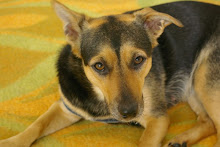Electric immobilization, the conventional method of slaughter in North American poultry slaughterhouses, causes an array of animal welfare, economic, and worker-safety problems. The process involves dumping and shackling live birds, running them through an electrically charged bath of water to immobilize them, slitting their throats with a machine, and defeathering them in tanks of scalding-hot water.
Since 2002, PETA has been urging major food retailers, such as McDonald’s, Burger King, Wendy’s, Kroger, Safeway, and Wal-Mart, as well as the nation’s largest poultry producers—including Butterball, Tyson, and Pilgrim’s Pride—to switch from electric immobilization to controlled-atmosphere killing (CAK).
Electric-immobilization systems require that birds be handled and processed while they are still alive and conscious, which causes them great suffering:
- Birds endure bruised and broken wings and legs and can suffocate when they are dumped and shackled.
- Frustrated workers often commit gratuitous acts of abuse and have been documented tearing live birds apart, spitting tobacco in their eyes, spray-painting their faces, stomping on them, punching them, kicking them, and even sexually assaulting them.
- Electric current levels are too low to render birds insensible to pain, and all birds are conscious as their throats are slit.
- Those who miss the blades—and millions do each year—are scalded to death in defeathering tanks.
This abuse is permitted because the Humane Methods of Slaughter Act, the only federal law designed to protect animals from abuse at slaughter, doesn’t protect chickens or turkeys. Chickens and turkeys make up more than 95 percent of the animals slaughtered in the U.S.—9.5 billion chickens and turkeys are slaughtered each year, compared to about 100 million pigs and 45 million cattle and sheep.
Electric immobilization also has negative economic implications for carcass quality, yield, and contamination:
- Dumping and shackling live birds causes broken bones, bruising, and hemorrhaging—all of which lower carcass quality and yield.
- Birds scratch and peck each other—and vomit and defecate on one another—which causes carcass contamination.
- Birds often inhale the pathogens in the electric water bath, resulting in carcass contamination.
- When they are scalded to death, birds defecate in the defeathering tanks, contaminating all the birds who are submerged afterward.
- The millions of birds who are scalded to death each year are condemned and cannot be sold, further lowering yield.
With regard to worker safety, traditional poultry slaughterhouses are dimly lit, stressful, disease-ridden places that result in poor working conditions:
- Low light in the dumping and shackling area—maintained to reduce the birds’ struggling—creates a poor working environment.
- The birds flap violently during handling, defecate and vomit on workers, and kick up dust and debris—including dried feces. This increases illness and injury rates, creating worker welfare problems and raising costs for employers.
- The overall poor working conditions result in an extraordinarily high turnover rate among slaughterhouse workers: an annual average between 75 and 100 percent.
Controlled-atmosphere killing is a U.S. Department of Agriculture (USDA)-approved slaughter method that is currently used to kill 75 percent of turkeys and 25 percent of chickens in the United Kingdom and 10 percent of all birds in the European Union. CAK removes oxygen from the birds’ atmosphere while they are still in their transport crates. The birds are not “gassed” (i.e., asphyxiated); they die from lack of oxygen, or anoxia, which is a painless process. CAK eliminates the numerous animal welfare, economic, and worker-safety issues associated with electric immobilization:
- With CAK, birds are dead before they are removed from their crates, shackled, bled, and scalded in defeathering tanks. Accordingly, these stages do not hurt the birds, damage or contaminate their carcasses, or pose a risk of injury to workers.
- With CAK, workers never handle live birds, so there are no chances for abuse. Worker ergonomics and safety are vastly improved. Lights can be kept bright, the air stays clean, and workers do not need to struggle with flapping, scratching, defecating, and vomiting birds.
Although certain industry representatives have attempted to argue that there is some uncertainty about the animal welfare benefits of CAK, these representatives are unable to produce a single study or report to challenge the fact that every published report on controlled-atmosphere systems to date—including a 2005 study by McDonald’s—concludes that it is the least cruel form of poultry slaughter available. These conclusions are affirmed by top meat-industry and USDA advisors, such as Drs. Temple Grandin, Ian Duncan, and Mohan Raj.
Considering the improvements in carcass quality, product yield, and labor costs that come with controlled-atmosphere killing, it is no surprise that a return on investment (ROI) in CAK can be reached in as little as one year.
Surprisingly, despite the clear benefits of CAK over electric immobilization and its minimal ROI time, North American poultry companies have been slow to adopt it. There is no reason to delay implementation of CAK in North American slaughterhouses any longer.
Source: Peta


No comments:
Post a Comment